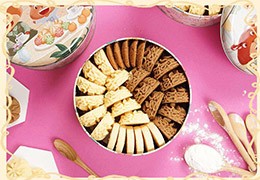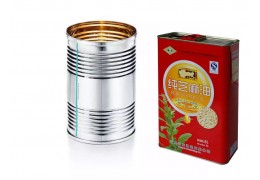Luxury tin container...
Teach you to identify coffee tin packaging labels
Buying coffee is always a very challenging thing. If you don't recognize the information on the coffee tin packaging, it is very difficult to find high-quality coffee that suits your taste. Today, I will teach you how to identify coffee tin packaging labels and how to use this information to find the perfect coffee for you.

First of all, the first point I want to say is: there is no single standard for packaging labels for coffee tins. At present, there is no law that clearly stipulates the packaging methods and standards of coffee tins. Coffee brands can customize coffee tins! Under normal circumstances, if a large brand customizes coffee tins, there is very little product information on the coffee tin packaging; the smaller the brand, the more product information. We are not interested in the coffee roasted by big companies. We only want to drink high-quality, small-batch roasted specialty coffee. The premise of all this is: you must read the densely packed words on the packaging!
Today, I will bring you some basic knowledge about coffee packaging. I will analyze for you how to make the right choice through information. The following content is only personal experience, for reference only, if there is something wrong, welcome to discuss!

Common coffee tin packaging information
1. Brand Name of Coffee Tins
Obviously, all companies will print their brand names on the packaging. Brand is an important basis for us to choose coffee, but we must remember that the larger the brand (such as Starbucks), the better the quality of coffee. Sometimes choosing small brands of beans will bring you unexpected surprises!

2. The origin, blend or single product marked on the coffee tin
This one is an important basis for our classification of coffee. The coffee origin identification is very similar to red wine, and the packaging is usually printed with an obvious origin name. Although some traditional origin identifications are not accurate, they still have a certain reference value. For example, coffee produced in Sumatra usually has a strong herbal flavour, spicy taste and strong taste. Except for the place of origin, "blended" coffee usually has a constant taste and its quality can withstand the test of time; "single product" coffee has a unique taste, but the stability of quality is not as good as blended coffee.

3. Whole coffee or ground coffee marked on the coffee tin
No need to explain too much. If you have your own grinder, buy whole coffee beans; if you don’t have one, you can also choose ground coffee. Grinding coffee by yourself can ensure the freshness of the coffee to the greatest extent, and the taste or quality of ground coffee powder will be somewhat lost. When buying coffee powder, pay attention to whether the degree of coffee grinding matches your brewing equipment.

4. The weight marked on the coffee tin
Without much analysis, the industry has certain standards for coffee packaging weight. In the past (US only), the weight of coffee in bags was usually 16 ounces (454 grams), but now most manufacturers will choose 12 ounces, 10 ounces, 8 ounces, or even 4 ounces. From the weight, you can guess The quality and value of coffee. Under normal circumstances, the weight of coffee bags produced by micro-batch roasters is small, which means that the value of coffee is very high and the quality is good. This kind of coffee is worthy of your careful taste.
5. The roasting date marked on the coffee tin
People in the industry generally believe that roasting date is one of the important factors that determine the quality of coffee, and I partly agree with this. In my opinion, in addition to the roasting date, the coffee packaging date is equally important. If the roaster stores the roasted coffee in an unsealed package, the coffee will also deteriorate faster. Ideally, roasters should store coffee in hot airtight bags. The best shelf life of coffee is usually 2-5 weeks. With a single vent, the shelf life of coffee can be extended to several months. Our principle is: the fresher the coffee, the better, so you must pay attention to the roasting date on the package when buying coffee. Many big brand manufacturers will print the words "best tasting date" on the packaging. Don't be fooled by it. The actual roasting date of coffee is usually half a year or one year before the "best tasting date".

6.Uses of coffee tin cans (drip filter or espresso)
Sometimes the coffee packaging will indicate the purpose of the coffee. In the past, most people drank drip coffee at home, so manufacturers sometimes deliberately marked "Espresso" for consumers' reference. Nowadays, specialty coffee has abandoned the unified roasting mode of the past. Whether it is "dripping" or "espresso", you can choose the brewing method according to your taste preferences.
6. The roasting degree marked on the coffee tin
I personally think that simply using the words "light", "medium", and "deep" to describe the degree of coffee roasting is neither appropriate nor accurate. The "deep" roasted coffee in our impression has a strong smoky flavour, a heavier taste and more bitter taste, but there are many factors that cause the above taste, and we can't put the word "deep" in a word. At present, the definition of the degree of roasting within the industry is very general, and the standards are not uniform. The “light” roasted coffee of one company may be similar to the roasting degree of the “deep” roasted coffee of another company, so I want to emphasize the roasting degree here. Can only be used for rough reference, please try not to make a choice based on the degree of baking indicated on the package.

7. Flavor characteristics marked on coffee tins
Compared with other information, the industry’s standards for "flavor characteristics" are even more difficult to unify. Some are simple and easy to understand, such as "chocolate flavor", "nut flavor", "fruit flavor", etc.; some are in the cloud, such as "black Gooseberry cream sauce" or "dough flavor", especially for single-origin coffee with a unique taste, it is almost impossible to describe the taste of coffee accurately and intuitively. Regarding the description of taste characteristics, I personally feel that few people will taste coffee according to the words on the package. Indeed, some features have certain reference value, and roasters have also racked their brains to come up with these words, but what most consumers really care about is whether the coffee brand is credible. Therefore, I suggest that manufacturers should set up two different taste description systems, one specifically for industry insiders and the other for ordinary consumers, with concise and clear vocabulary to help them make choices and improve their coffee experience.
Now that I have a general understanding of the basics of coffee tin packaging, how can I put it into practice?
1. Remember the trustworthy coffee tin packaging brand, do not blindly believe in big brands, not that the bigger the brand, the better the quality of coffee. Remember, your personal experience is the most reliable basis for your choice of coffee.
2. Memorize the common origins of coffee tin packaging and the most obvious taste characteristics of local coffee to help you make the right choice.
3. The blending depends on the coffee tin packaging brand, and the single product depends on the origin.
4. Check the classification and use of coffee tins. If it is not written on the package whether it is whole coffee or ground coffee, you will know by touching it.
5. If you prefer espresso, you can choose a coffee with a slightly darker roast, which has more caramelization and a more mellow taste.

From the coffee tin packaging,we can clearly see a series of information such as the origin, weight and taste characteristics of the coffee. The picture shows the other information identified, which I will elaborate on in the next article.
.jpg)














Latest comments